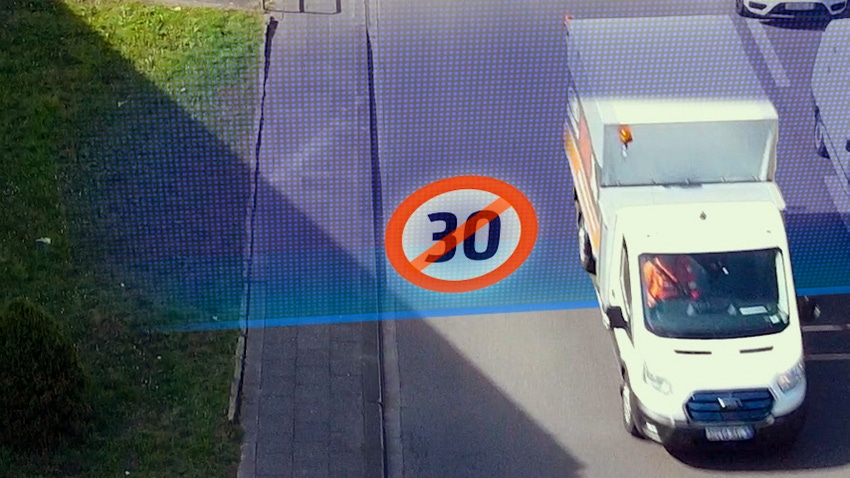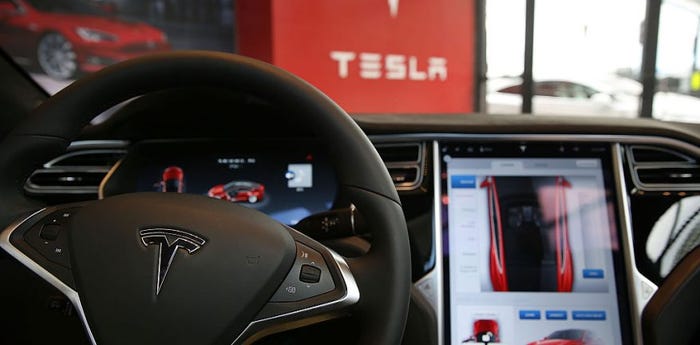Ford Testing Geofencing Tech That Cuts Vehicle Speeds
The technology has the potential to enhance road safety, help drivers avoid incurring speeding fines and do away with speed limit road signs forever.
May 26, 2022

Ford is trialing a new geofencing system that alerts drivers of connected cars when they break the speed limit and automatically slows them down.
According to the automaker, the tech has the potential to enhance road safety, to help drivers avoid inadvertently incurring speeding fines – and do away with speed limit road signs forever.
The idea behind Ford’s tech is quite straightforward. Geofencing essentially creates a virtual geographical boundary in a specific area – for example, part of a town center.
Ford software engineers from Palo Alto, California, have developed tech that connects a vehicle to the geofencing system for GPS tracking and data exchange.
The driver receives the information via the dashboard display cluster, with the boundary’s speed limit flashing below the current speed. If necessary, the vehicle then automatically reduces the speed in line with the required limit of the geofenced zone.
This obviously reduces the need for a driver to be constantly scouring the side of the road for speed limit signs – a clear benefit in unfamiliar areas and, according to Ford, specifically in Germany, where the testing program is taking place, because of the fact there are more than 1,000 different types of road sign across the nation for vehicle users to familiarize themselves with.
Although Ford already has driver assistance technologies fitted to some production vehicles that help ensure drivers don’t exceed speed limits, the company believes the geofencing system is potentially more flexible and effective.
And there are other possible benefits, too. In the future, Ford says the system could enable drivers to set their own geofencing zones at speeds as low as 12 mph, at workplaces, such as depots, and private facilities. Speed limits could also be set dynamically, to take into account local hazards, temporary road works and the time of day.
The company is keen to point out, too, that the driver can override the system and deactivate the speed limit control at any time.
The tests, which will last until March 2023, are being carried out by electric Ford E-Transit vans in all 18 mph zones in the center of Cologne, as well as in selected 30 mph and 18 mph zones elsewhere in the city. Were the tech to be rolled out in the future to production vehicles, it could be applied to passenger cars as well as light commercial vehicles.
“Connected vehicle technology has the proven potential to help make everyday driving easier and safer to benefit everyone, not just the person behind the wheel,” said Michael Huynh, manager, City Engagement Germany, Ford of Europe. “Geofencing can ensure speeds are reduced where – and even when – necessary to help improve safety and create a more pleasant environment.”
The trial is merely the latest in a number of recent Ford research projects designed to improve road safety. In March, it was revealed the company was assessing connected traffic light tech that would automatically go green to offer clearer routes for ambulances, fire engines and police vehicles.
About the Author(s)
You May Also Like



.png?width=700&auto=webp&quality=80&disable=upscale)
.png?width=700&auto=webp&quality=80&disable=upscale)
.png?width=300&auto=webp&quality=80&disable=upscale)
.png?width=300&auto=webp&quality=80&disable=upscale)
.png?width=300&auto=webp&quality=80&disable=upscale)
